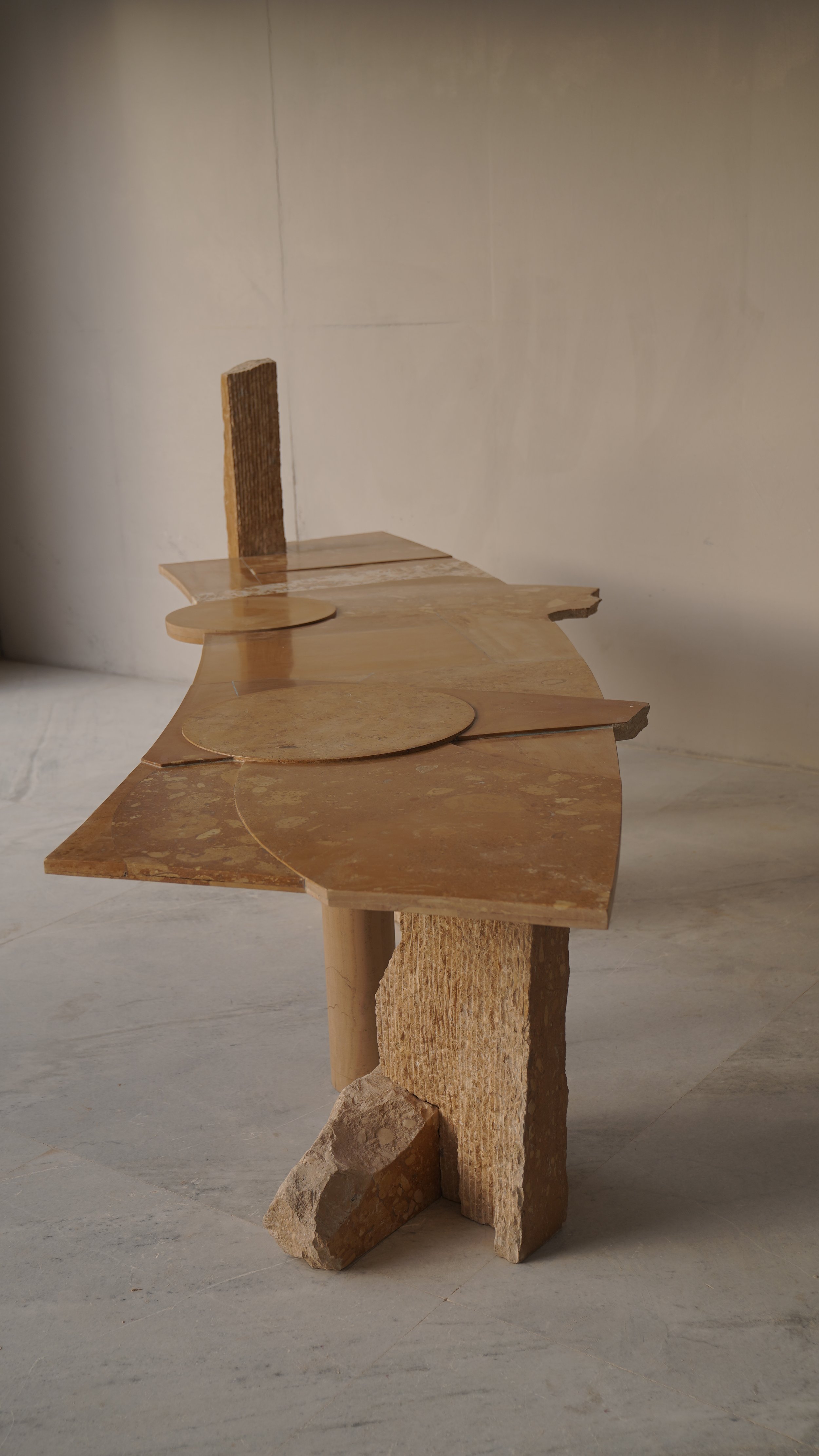Marble Dust in the Air
Marble quarrying in Makrana. (image: Eshwarya Grover).
“Makrana marble is so particular to India. A friend asked us once: ‘How do you differentiate two marbles that might look very similar, but one is from the region and one is not?’”
“We thought, maybe it’s about the grain or size of the crystals or the shine—”
“—but we went to Kamal, our studio manager, and he said, ‘It’s the sound. The marble sounds like glass.’”
Priyanka Sharma and Dushyant Bansal are lively conversationalists, one often starting the next part of their story as the other is finishing. The origins of their work, however, are clear. They set up their design practice Studio Raw Material in 2016 in the northwestern state of Rajasthan, India, to facilitate “an ongoing exploration of geology in terms of material and processes”. The pair are particularly interested in extraction, value and waste, with the genesis of their investigation centring on a particular vein of reverberant marble.
Makrana, in central Rajasthan, is home to a marble deposit noted for its bright, white, pristine stone – a material that is internationally recognised as a Global Heritage Stone Resource, alongside materials such as Cambrian Welsh slate and Carrara marble. Makrana’s quarries are historic and their marble has been used in India (and further afield) for temple building, flooring, and, most famously, the luminous domes and pillars of the Taj Mahal. While lookalike marbles are available, these are less compact and, when tapped, produce a more hollow sound. Even working with Makrana marble is different. The craftspeople who deal with the stone daily “do a lot of very local techniques, such as testing the sound or putting it in water to understand what the density and purity levels are like,” says Eshwarya Grover, a visual artist and friend of Studio Raw Material, who has been helping Sharma and Bansal document their work.

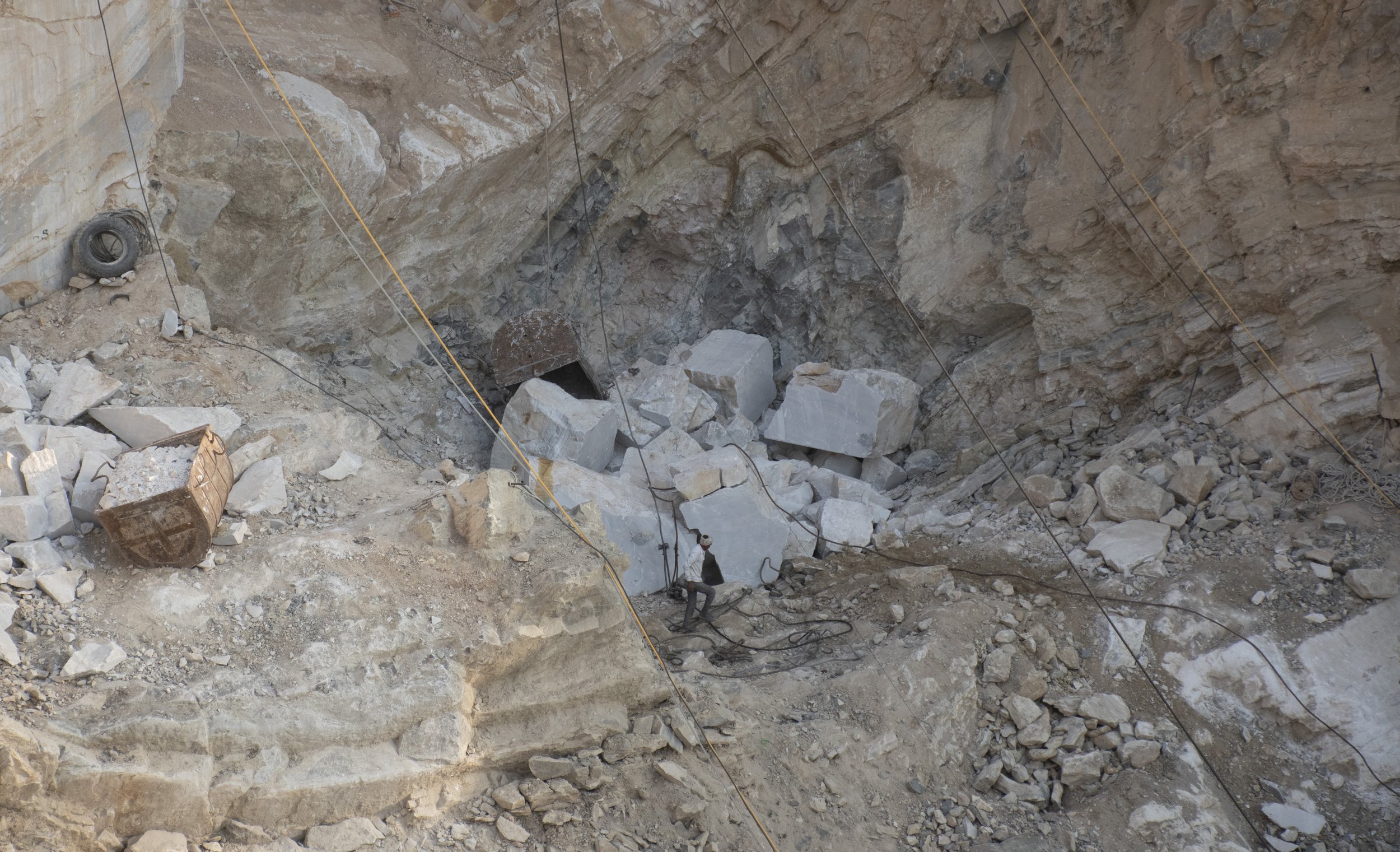
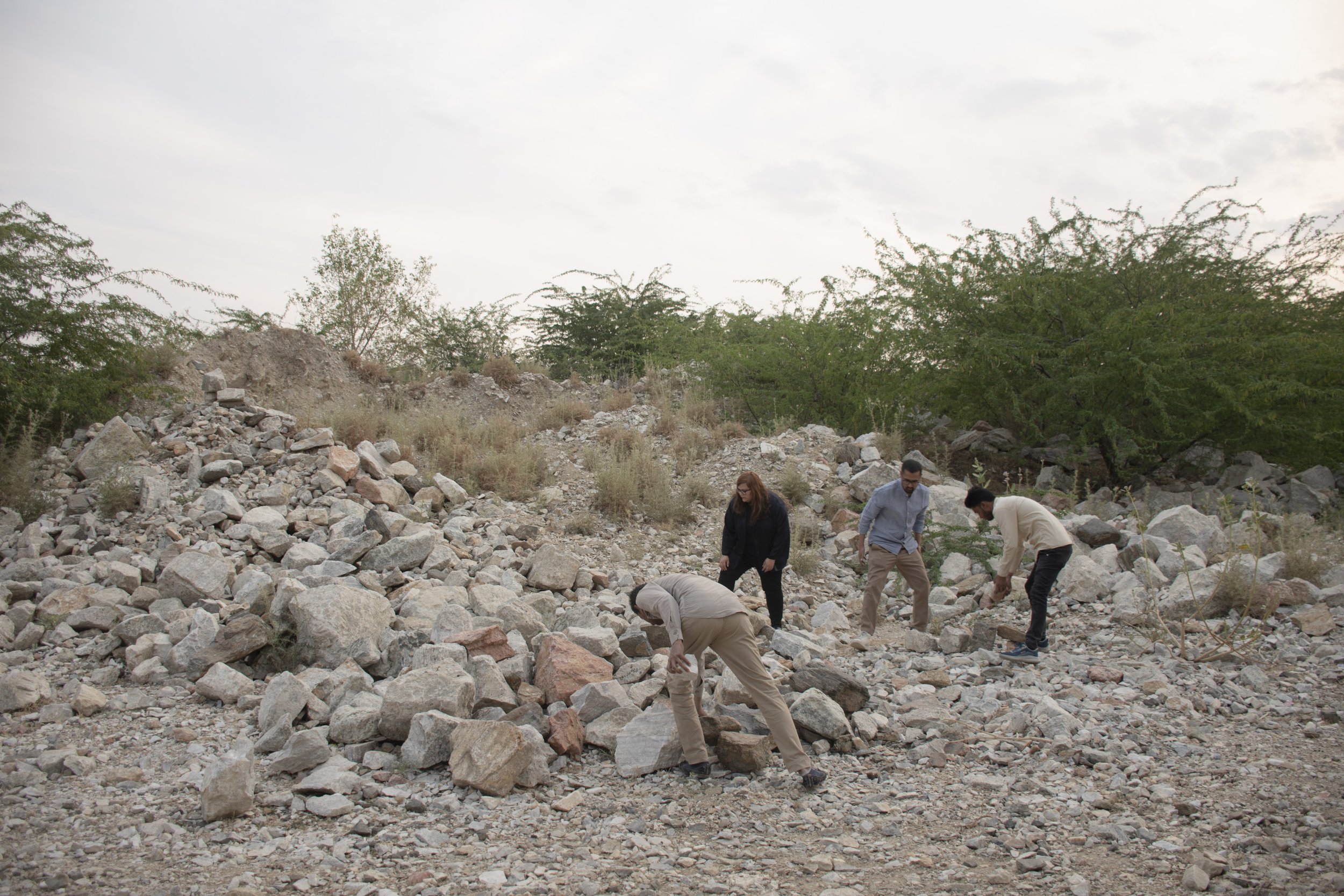
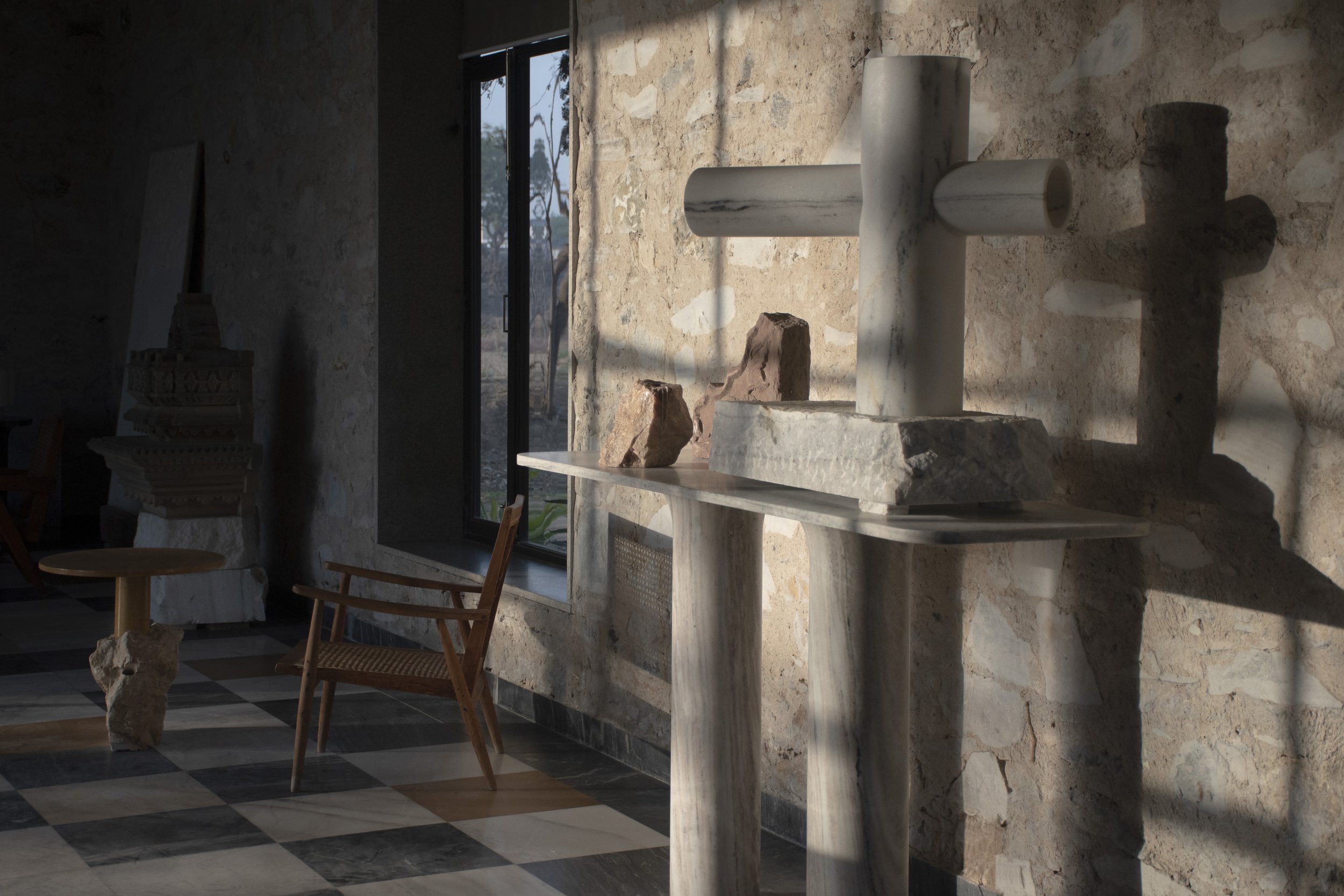
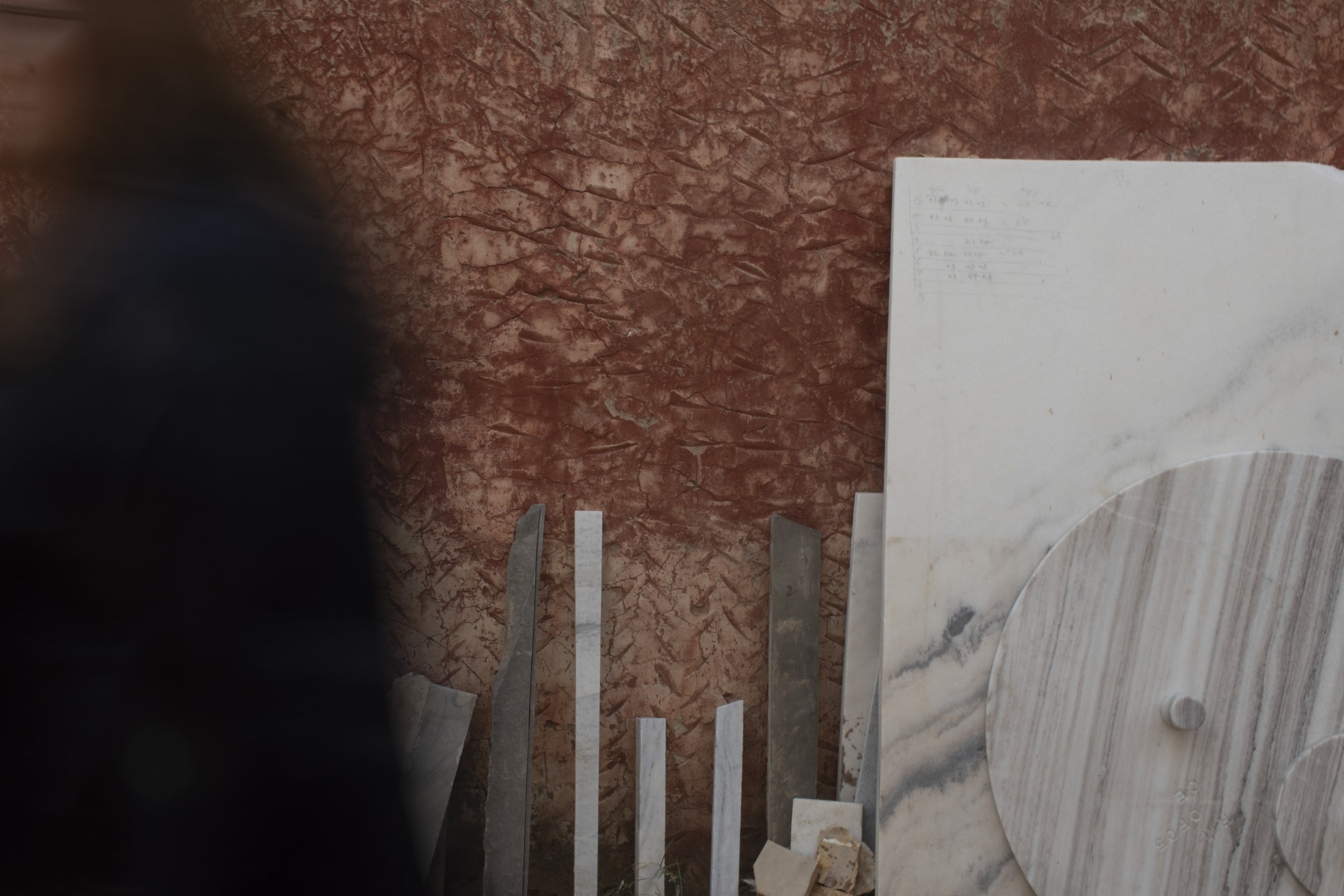
Makrana is inseparable from its marble. The city and surrounding tehsil – a small administrative region – are made of it. “There’s this really barren, stark desert without much vegetation,” explains Bansal, “but there is also the micro-landscape of marble – the industry with its heavy machinery, which is further shaping it. It’s natural but with this microcosm of landscape cut by man.” Bansal, who comes from a marble industry family, knows the area well and understands how quarrying has shaped Makrana. “Because there is so much [industrial] waste, there are these yards, which over the years have become a landscape of dumped marble,” he says. “The moment you enter the vicinity of Makrana, you can see little heaps of marble and people tinkering and carving statues.” In this sense, Studio Raw Material oscillates between seeing the landscape as poetic and commercial. Although Bansal and Sharma appreciate Makrana’s “otherworldly” character – “the materiality of the stone is pervasive; you can feel the texture just with your eyes and the air is different, it’s extremely dusty” – they are particularly interested in the impact of extraction. “[Makrana] is this big, industrial place where there is so much production,” says Bansal, “so the proportional wastage from that is quite drastic.”
Sharma, a trained product designer, and Bansal, who studied architecture, became increasingly interested in the area’s marble waste, and started to experiment with making small designs using cuboidal offcuts sourced from waste dumps. Although Makrana is best known for its white marble, pink marble also occurs locally as surface deposits. “As you go deeper, you find the white marble,” Bansal explains, “but [with Markrana] being an old and important market for stone, most businesses stock other colours for the ease of buyers.” As such, marble colours of all kinds turn up in the region’s dump yards, with these varieties subject to material hierarchies. Salmon-coloured marble is less popular than white, and stones that bear blemishes or markings are typically considered to be waste.
Against this backdrop, the studio produced a collection of side tables, bowls and lamps constructed using traditional joinery techniques, often combining pink, white and darker stones in one design. “Everyone here is used to working with very clean, very white marble,” says Sharma, and this preference is difficult to shake – even amongst the craftspeople with whom Studio Raw Material works. “They would [see a piece of blemished marble] and say ‘Oh, this looks like kachara!’ which means ‘trash’, but really bad trash, the kind you absolutely wouldn’t touch!” Sharma laughs. “It’s not even worth throwing away!”

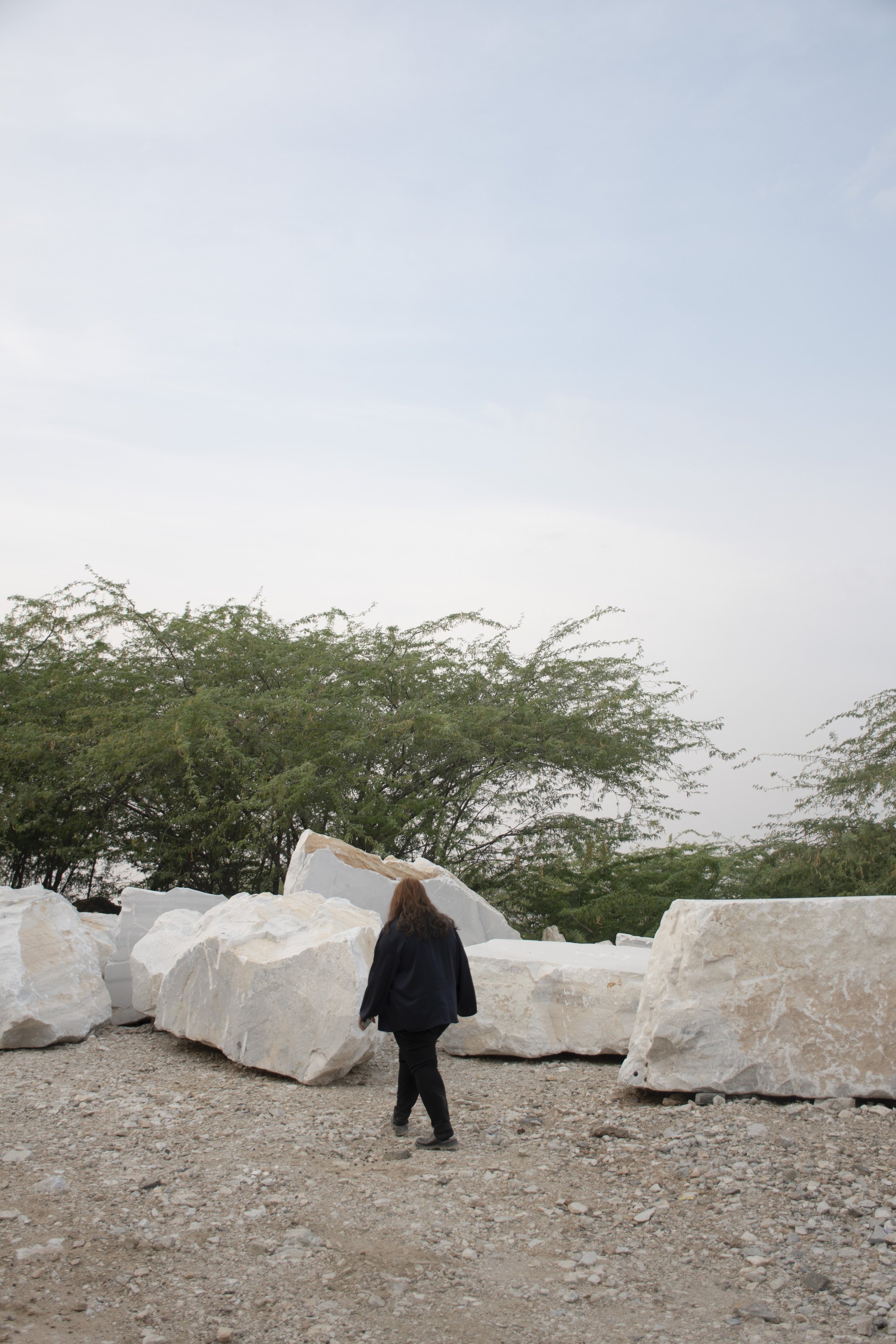


It is this desire for marble to be singular, solid and pristine that Studio Raw Material wants to push against, designing objects that are purposefully fragmentary and which celebrate the waste and scraps they use – “pieces that are actually much more beautiful for me,” Sharma explains, “because of all the fissures and markings.” Their Khokhar table, which featured in Danish brand &Tradition’s 2022 Studies of a Table exhibition in Copenhagen, derives its jigsaw-like construction from its constituent waste elements. “The industry here is predominantly for flooring, so when they dress the big blocks [of marble] they put them into a slicing machine,” explains Sharma. “The blocks aren’t completely cuboid, so you get a lot of unusable slices or they break in transport. We collect them from construction sites, or the suppliers will often have a big pile of broken slices.
The studio’s treatment of marble waste is intended to reflect its day-to-day use in Makrana. This is most visible in a series of outdoor structures that have sprung up out of the landscape of the tehsil and its quarries. These shaded shelters, tea stalls and benches are efficiently and simply constructed from scrap marble, and offer spaces for rest and socialising during the working day. “They’re these massive pieces of rock, which nobody is using,” says Grover. “The structures are so graphic in nature – it feels like they are deliberately made from that landscape.” Although built for practical rather than aesthetic reasons, these objects’ construction methods merit inspection. “They’re all made according to convenience [and] there’s a certain hierarchy to how the stones are placed, which makes it into a proper shelter that’s stable on the ground,” she reflects. “They use small stones in between [the larger pieces] as joinery.” This vernacular usage, she adds, creates an interesting tension between the marble and the landscape from which it originates. “This is a material that’s used to make luxury products, but [people from Makrana] see it as an essential building unit.”
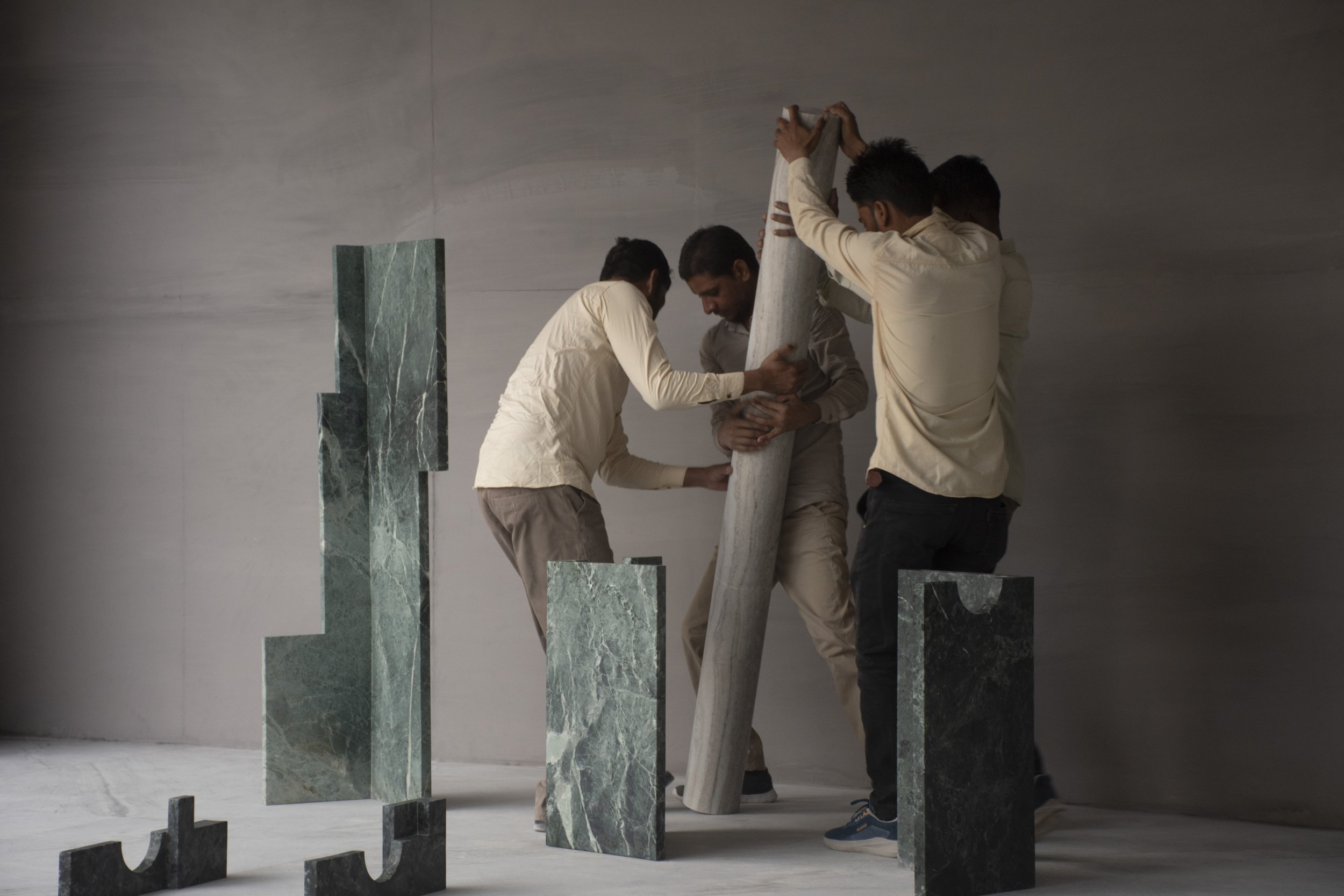
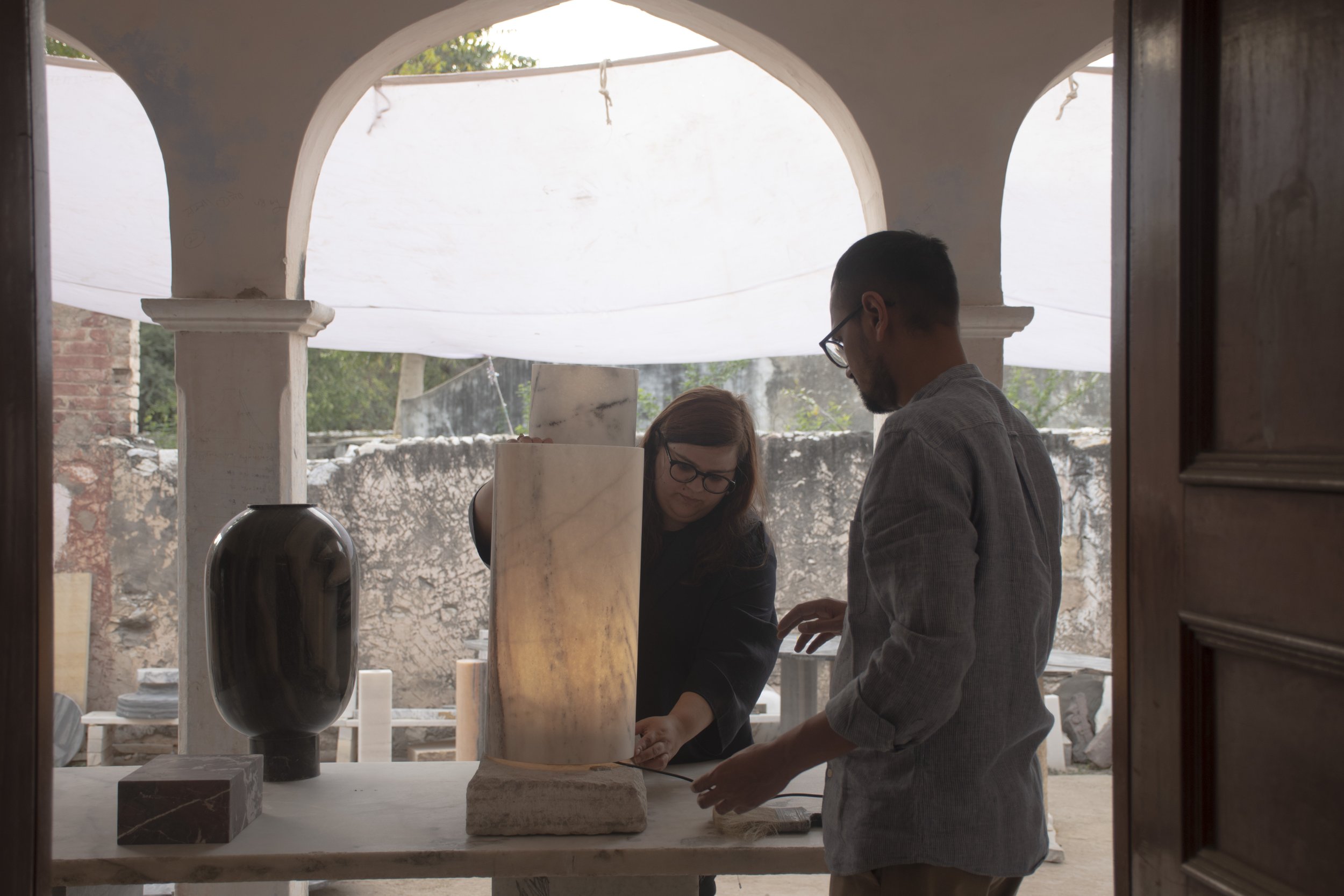
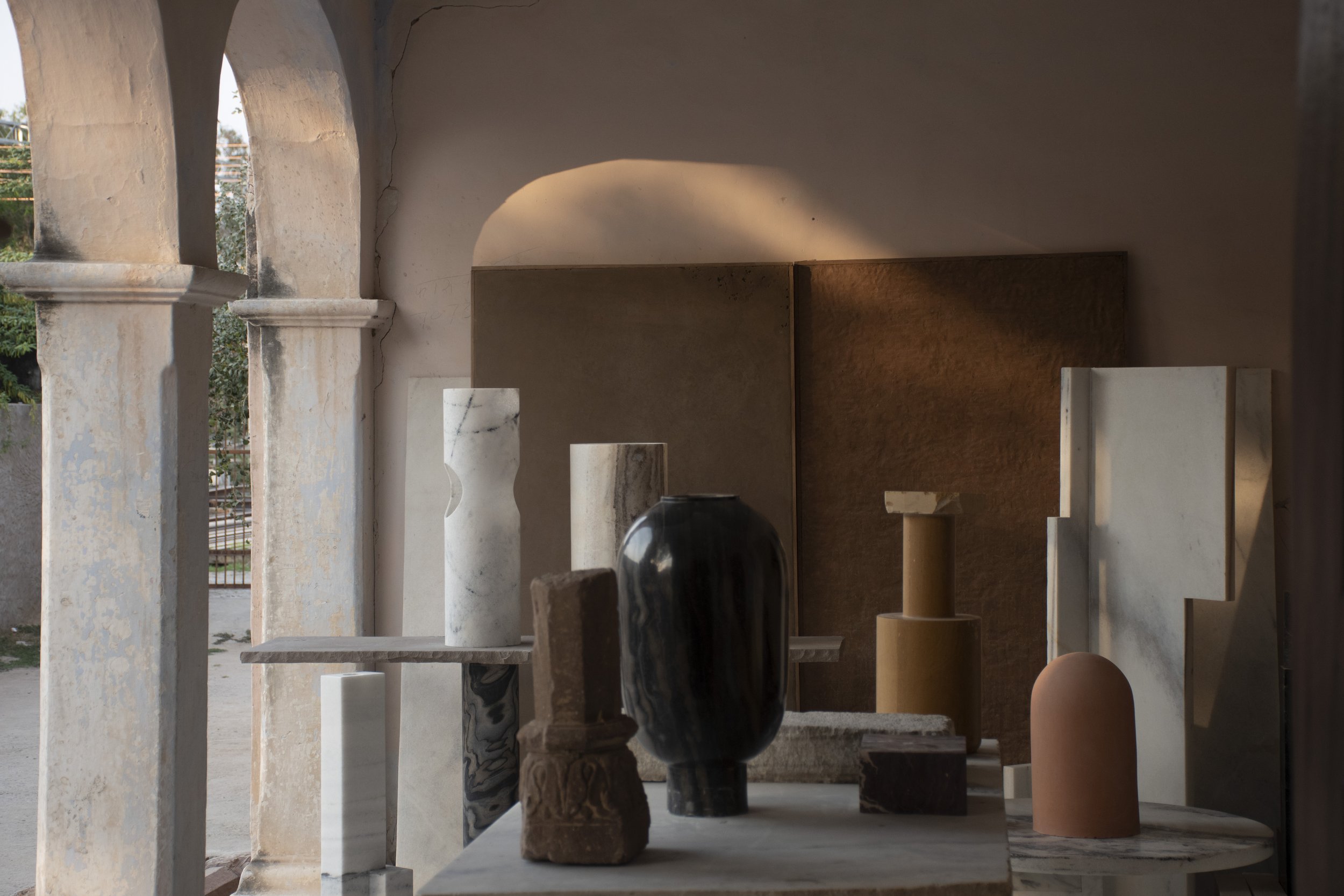
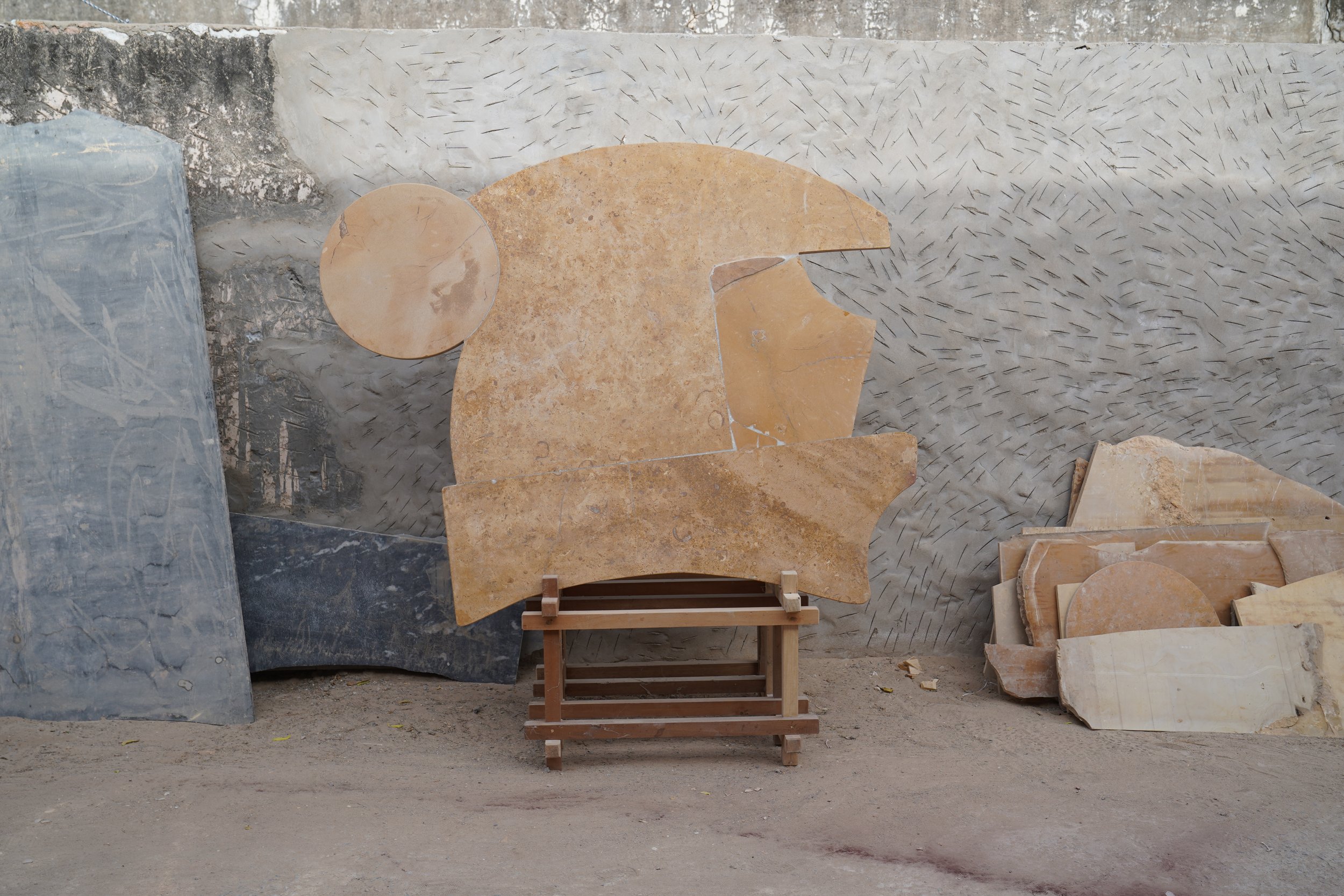
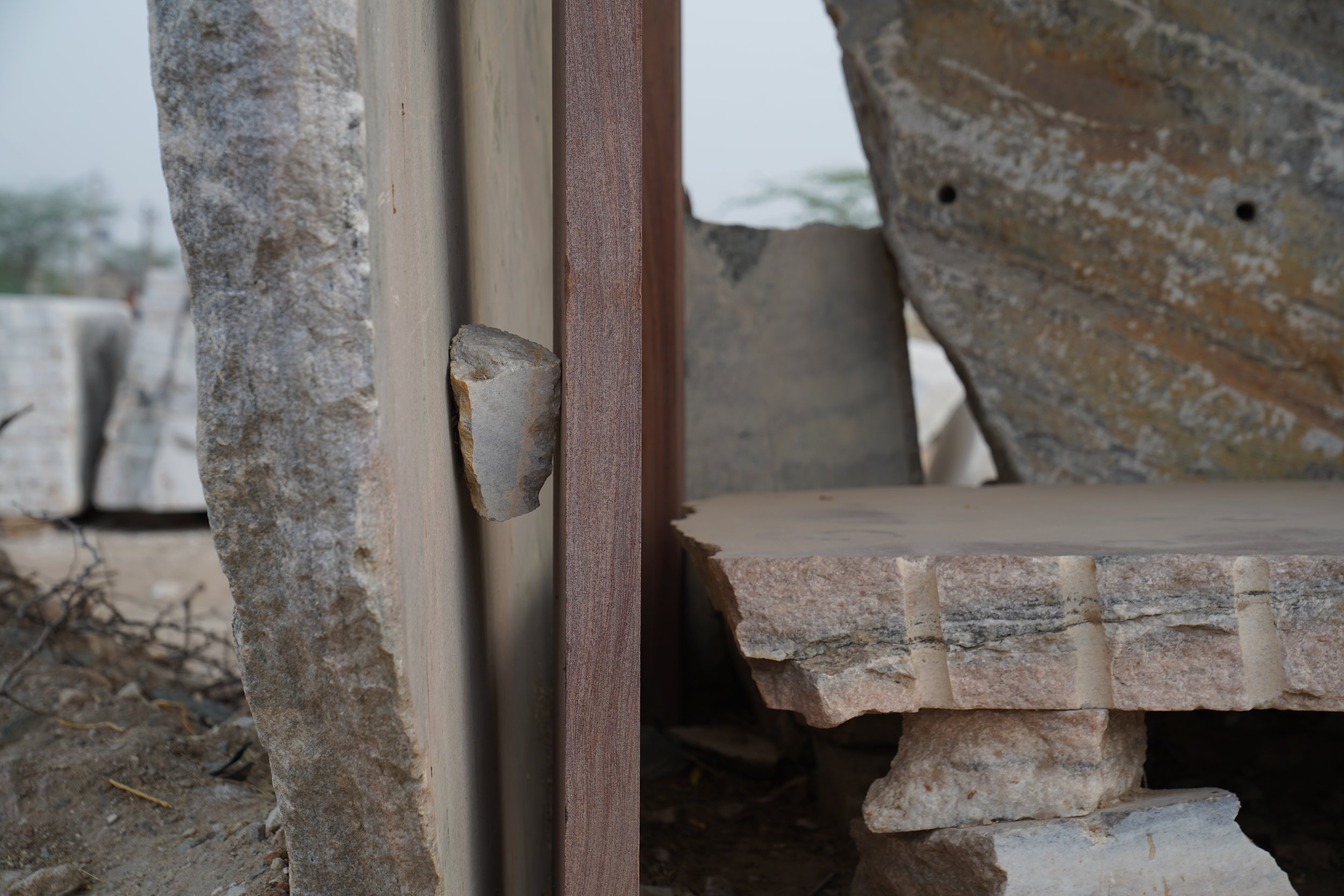
This interplay between marble as utility and marble as ornament can be seen most explicitly in Studio Raw Material’s Thar house, which stands just outside the Makrana tehsil. The project epitomises the practice’s ethos and work – a marble home/studio space designed to accommodate pieces from their collection. “Most houses [in the area] are traditionally built using stone instead of brick, because there’s so much material around, which is then plastered over,” explains Bansal, referring to Thar house’s dry-stone walls made from tiny fragments of marble. “[But] we left [the walls] exposed, which everyone could agree looks beautiful.” The result is that Thar house “feels like a modern piece of art,” Grover observes, “but it’s actually made with very simple, local techniques – it’s just that the presentation is slightly different.”
This hints at the light touch that Studio Raw Material aims for in its work. Sharma and Bansal are interested in presenting the marble of Makrana as it is found – not lavishly carved or selected for pristine uniformity, but rather touching on its vernacular usage and offering this up as a contemporary treatment of the material. “Every time we find something, we collect it,” says Sharma. “We don’t design pieces in marble where we know we’re not going to be able to get [the required material].” Their real aim, then, is to “be immersed in this one singular landscape,” says Bansal. “We want to make work from that landscape, from that region, and not look at anything else. We want to work with that constraint.”
Words Evi Hall
Photographs Eshwarya Grover
This article was originally published in Disegno #35. To buy the issue, or subscribe to the journal, please visit the online shop.


